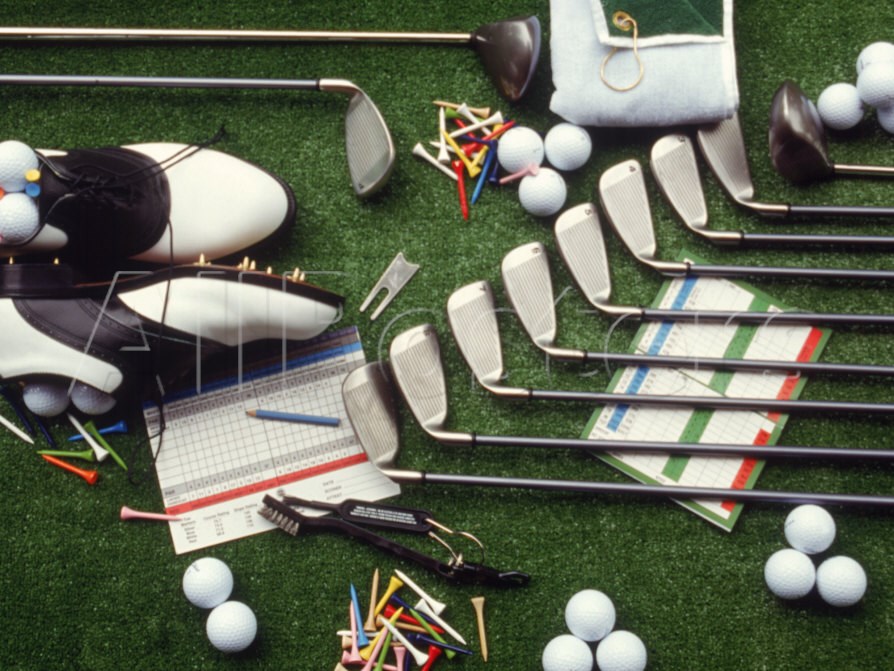Introduction: The Importance of Professional Golf Kits
For professional golfers, every piece of equipment in their golf kit plays a crucial role in their performance. From the driver to the putter, each club is meticulously chosen to suit their playing style and preferences. Understanding the specifications and unique qualities of these golf kits can provide valuable insights for amateur golfers looking to improve their game. This article will explore the key components of a professional golf kit and highlight what makes them exceptional.
Golf is a game of precision, skill, and the right equipment. Professional golfers rely on top-tier gear to perform at their best. But what makes these professional golf kits so special? In this article, we will delve into the specifications and unique qualities of golf kits used by the pros, revealing what sets them apart and how they can elevate your game.
The Driver: Power and Precision
The driver is one of the most important clubs in a professional golfer’s bag. It is designed for maximum distance off the tee, and its specifications are tailored to the player’s swing characteristics.
Specifications of a Professional Driver
Professional drivers typically feature a larger clubhead size, ranging from 440cc to 460cc, which provides a larger sweet spot and increased forgiveness. The loft angle can vary between 8 and 12 degrees, depending on the player’s preference and swing speed. Shaft length and flexibility are also critical factors, with most pros opting for a slightly longer shaft (around 45 inches) and a stiffer flex to maximize control and power.
Unique Qualities of Professional Drivers
One unique quality of professional drivers is the adjustable features. Many high-end drivers come with adjustable hosels and weights, allowing golfers to fine-tune the club’s loft, lie angle, and center of gravity. This customization helps players optimize their launch conditions and achieve their desired ball flight. Additionally, the materials used in professional drivers, such as titanium and carbon fiber, contribute to their lightweight and durable design, enhancing performance.
Fairway Woods and Hybrids: Versatility on the Course
Fairway woods and hybrids are essential for long shots from the fairway or rough. These clubs offer versatility and precision, making them indispensable in a professional’s golf kit.
Specifications of Fairway Woods and Hybrids
Fairway woods typically have clubhead sizes ranging from 140cc to 180cc and loft angles between 13 and 19 degrees. Hybrids, on the other hand, combine the characteristics of woods and irons, with lofts varying from 18 to 27 degrees. Shaft length for fairway woods is usually around 43 inches, while hybrids are slightly shorter at approximately 40 inches. The shaft flex can vary, but most professionals prefer a stiff or extra-stiff flex for better control.
Unique Qualities of Fairway Woods and Hybrids
The unique qualities of fairway woods and hybrids lie in their design and adjustability. Modern fairway woods often feature low-profile clubheads and shallow faces, making it easier to achieve a higher launch and longer carry. Hybrids, with their compact shape and high moment of inertia (MOI), offer greater forgiveness and versatility. Adjustable hosels in these clubs allow players to modify the loft and lie angle, ensuring optimal performance for different course conditions.

Irons: Precision and Control
Irons are the workhorses of a golf kit, used for a variety of shots ranging from mid-range to approach shots. The specifications and design of professional irons are geared towards precision and control.
Specifications of Professional Irons
Professional irons typically come in sets, ranging from 3-iron to pitching wedge (PW) or even 4-iron to PW. The loft angles increase progressively, with lower-numbered irons having less loft (e.g., 20 degrees for a 3-iron) and higher-numbered irons having more loft (e.g., 46 degrees for a PW). The shaft length also decreases with higher-numbered irons, providing better control for shorter shots. Most professionals use steel shafts with stiff or extra-stiff flex for enhanced accuracy.
Unique Qualities of Professional Irons
The unique qualities of professional irons include their construction and design features. Many high-end irons are forged from soft carbon steel, providing a solid feel and excellent feedback. The clubhead design often features a cavity back or muscle back, offering varying levels of forgiveness and workability. Cavity back irons are more forgiving and suited for consistent ball striking, while muscle back irons provide greater control and shot-shaping ability. The use of tungsten weighting in the clubhead helps lower the center of gravity, promoting higher launch and increased stability.
Wedges: Mastering the Short Game
Wedges are crucial for the short game, allowing golfers to execute precise shots around the green. The specifications and unique qualities of professional wedges can significantly impact a player’s performance.
Specifications of Professional Wedges
Professional wedges come in various types, including pitching wedges (46-50 degrees), gap wedges (50-54 degrees), sand wedges (54-58 degrees), and lob wedges (58-64 degrees). The bounce angle, which is the angle between the leading edge and the ground, varies based on the wedge type and intended use. Higher bounce angles are ideal for soft conditions and bunker shots, while lower bounce angles suit firmer conditions. Shaft length is typically shorter than irons, around 35 to 36 inches, for better control.
Unique Qualities of Professional Wedges
The unique qualities of professional wedges lie in their grooves and sole design. The grooves on the clubface are designed to maximize spin and control, with sharper and deeper grooves providing more grip on the ball. The sole design, including the grind and camber, affects how the club interacts with the turf and sand. Custom grinds tailored to a player’s swing and course conditions can enhance performance and versatility. The materials used in wedges, such as soft carbon steel, offer a softer feel and better feedback on impact.
Putters: The Art of Putting
The putter is a specialized club used on the green to roll the ball into the hole. The specifications and unique qualities of professional putters are designed to provide consistency and confidence.
Specifications of Professional Putters
Professional putters come in various shapes and sizes, including blade, mallet, and mid-mallet designs. The length of the putter shaft can vary, with most professionals using putters between 33 and 35 inches long. The loft angle is typically around 3 to 4 degrees, while the lie angle is usually around 70 degrees. The weight and balance of the putter are critical for achieving a smooth and consistent stroke.
Unique Qualities of Professional Putters
The unique qualities of professional putters include their alignment aids and face technology. Alignment aids, such as sight lines and dots, help golfers aim accurately and improve consistency. Face technology, including milled faces and insert materials, enhances feel and roll. Milled faces offer a solid and responsive feel, while inserts can provide a softer touch and better distance control. Customizable features, such as adjustable weights and hosels, allow players to fine-tune their putter to suit their preferences and putting style.
Infographic: Specifications of Professional Golf Equipment
Here’s a quick reference table summarizing the specifications of professional golf equipment discussed in this article:
| Equipment Type | Clubhead Size | Loft Angle | Shaft Length | Unique Qualities |
|---|---|---|---|---|
| Driver | 440cc-460cc | 8-12 degrees | ~45 inches | Adjustable features, lightweight materials |
| Fairway Woods | 140cc-180cc | 13-19 degrees | ~43 inches | Low-profile design, adjustable hosels |
| Hybrids | Compact | 18-27 degrees | ~40 inches | High MOI, versatility |
| Irons | Varies | 20-46 degrees | Decreasing with club number | Forged construction, cavity/muscle back design |
| Wedges | Varies | 46-64 degrees | ~35-36 inches | Grooves, sole design, custom grinds |
| Putters | Varies | 3-4 degrees | 33-35 inches | Alignment aids, face technology |
Conclusion: Elevating Your Game with Professional Golf Kits
Understanding the specifications and unique qualities of professional golf kits can provide valuable insights for golfers looking to elevate their game. From drivers designed for power and precision to wedges that master the short game, each piece of equipment plays a critical role in a professional golfer’s success. By choosing the right gear tailored to your playing style and preferences, you can enhance your performance and enjoy the game at a higher level.
In summary, professional golf kits are meticulously crafted to offer superior performance, control, and versatility. Whether you’re an amateur looking to upgrade your equipment or an aspiring pro, investing in high-quality gear can make a significant difference in your game. With the right knowledge and understanding, you can select the best equipment to suit your needs and take your golfing experience to new heights.
Note :- To Read More Articles Visit on- netblogz
